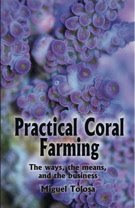
Here at the Lab we have been having some unusual occurrences with our Eastern Lubber Grasshoppers
Romalea guttata. For those of you who are new or did not know, we breed our Eastern Lubber Grasshoppers right here at the lab. To give you a point of reference here is the basic life cycle of a lubber:
The common life cycle of a Lubber (even in captivity) is an emergence of nymphs as early as February to March. These black nymphs go through five molts (each stage is called an instar) and each instar stage lasts about 15-20 days. After their last instar stage the juveniles are adults and that is when the lubbers get their colorful exoskeleton and beautiful patterning. Adults will live another few months and females will lay up to three egg masses in the soil and by the next spring their life cycle begins again.
Our strange happenings began in December when an unusually early emergence of juvenile lubbers were born (and we still have more baby lubbers emerging!)
Then we have noticed three of our lubbers have white eyes! We are not totally sure why, but most likely it is similar to
Drosophila melanogaster's white eye mutation. These lubbers are also white when they molt after each juvenile instar stage (usually they are red). We are anxious to see what they will look like as adults, but mostly I just wanted to share with the world that we have some cool WHITE EYED LUBBERS!
 For centuries these prehistoric looking creatures have been roaming around the oceans of the world. Their body design has been a faithful one that has been found in similar ancient species that existed 400 million years ago. The reasons for their success are varied, but one might have to do with a microscopic creature's assist. Sinagpore scientists have discovered a unique bacteria in the proteins of horseshoe crabs that can be used as an efficient antibiotic. This antibiotic protein found in the blue blood of the horseshoe crab can kill at an astounding rate of 100 billion bacteria in 15 minutes. Besides the amazing advantage of feeling better in less time the fact that it kills so quickly decreases the chances of antibiotic resistant bacteria! But before we get ahead of ourselves, scientists are still researching to find out if this protein will be viable for human use.
For centuries these prehistoric looking creatures have been roaming around the oceans of the world. Their body design has been a faithful one that has been found in similar ancient species that existed 400 million years ago. The reasons for their success are varied, but one might have to do with a microscopic creature's assist. Sinagpore scientists have discovered a unique bacteria in the proteins of horseshoe crabs that can be used as an efficient antibiotic. This antibiotic protein found in the blue blood of the horseshoe crab can kill at an astounding rate of 100 billion bacteria in 15 minutes. Besides the amazing advantage of feeling better in less time the fact that it kills so quickly decreases the chances of antibiotic resistant bacteria! But before we get ahead of ourselves, scientists are still researching to find out if this protein will be viable for human use.
 Recently horseshoe crabs were added to the near threatened list, meaning that their numbers are significantly dwindling. You can help save their habitat though. The "Bee Inspired" t-shirts offered by SaveNature.Org for $17.00 goes towards the protection of habitat in many coral reefs around the world. If you'd like to order one just email sharyl@savenature.org or call at 1 (877) 284-6564.
Recently horseshoe crabs were added to the near threatened list, meaning that their numbers are significantly dwindling. You can help save their habitat though. The "Bee Inspired" t-shirts offered by SaveNature.Org for $17.00 goes towards the protection of habitat in many coral reefs around the world. If you'd like to order one just email sharyl@savenature.org or call at 1 (877) 284-6564.













